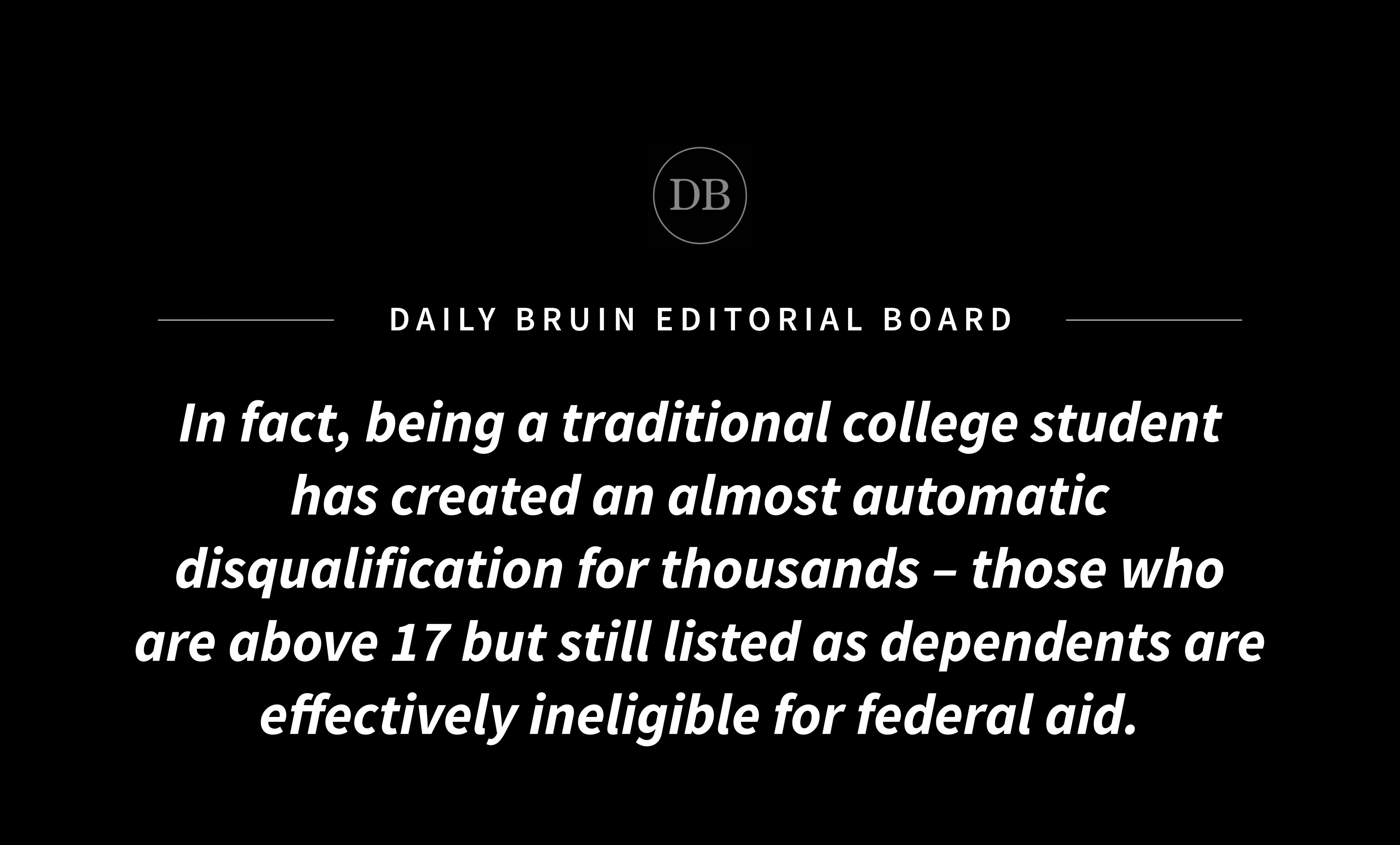Editorial: Stimulus package ignores needs of college students, warrants further consideration

By Editorial Board
April 13, 2020 4:36 p.m.
A $1,200 check could go toward a lot of things.
It can cover rent for Westwood apartments sitting empty during a countywide “safer at home” order. It could help alleviate the burden caused by lost jobs that previously paid tuition.
Or it can sit and do nothing, as legislators leave college students affected by the COVID-19 pandemic out in the cold.
The $2.2 trillion bipartisan stimulus package, signed into law by President Donald Trump on March 27, is meant to provide economic relief to Americans affected by the novel coronavirus outbreak. The bill offers a host of economic assistance to individuals, such as increased unemployment benefits and, most notably, a $1,200 check to qualifying taxpayers.
At face value, this bill is great. It provides immediate financial relief alongside other desperately needed welfare benefits.
But there’s a problem: Scores of college students will not qualify for the stimulus check.
If a college student is under 24 years old and claimed as a dependent on a tax return, the student is exempt from stimulus check benefits.
On top of that, many parents will be disqualified from receiving benefits if their 2018 or 2019 gross income is too high. But considering current unemployment rates, many households have past tax returns that don’t reflect the current reality.
This catch-22 obviously presents a huge problem for college students and their families. For many of them, buying last-minute flights back home or making payments to relentless landlords in Los Angeles means an additional financial burden atop the economic woes their parents are suffering.
Not to mention, our newly minted Zoom university hasn’t reduced campus fees or tuition.
The stimulus bill does include a six-month break in student loan payments – students with federal debt loans won’t need to make any sort of payment until October 2020 and any interest accrued during this period will be waived.
But it’s not enough.
Higher education may be more accessible because of online collaborative networks and video conferencing. However, many students opted to withdraw from their respective universities when faced with the combination of a lackluster online education and the burden of full tuition requirements.
These costs, coupled with the fact that many students have lost their source of steady income, makes higher education all the more stressful and ultimately, unaffordable.
Understandably, legislators pushed this bill through Congress after less than 48 hours of bipartisan negotiations. Given the unfolding global crisis, time was of the essence.
But this bill is nowhere near finished.
Granted, many college-age students often have the support of their families. But for those who don’t – or for those whose families are struggling to make ends meet – this stimulus package leaves them stranded by no fault of their own. In fact, being a traditional college student has created an almost automatic disqualification for thousands – those who are above 17 but still listed as dependents are effectively ineligible for federal aid.
California Senator Diane Feinstein said the stimulus bill was a good start, but “more needs to be done.”
And while she didn’t specify exactly what that is, perhaps looking toward the needs of public university students in her home state is a good start.

